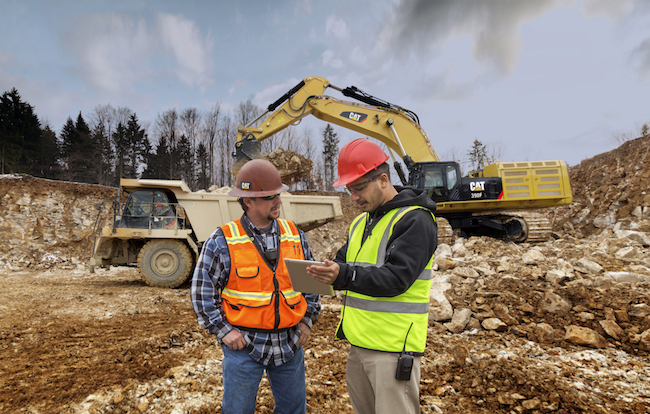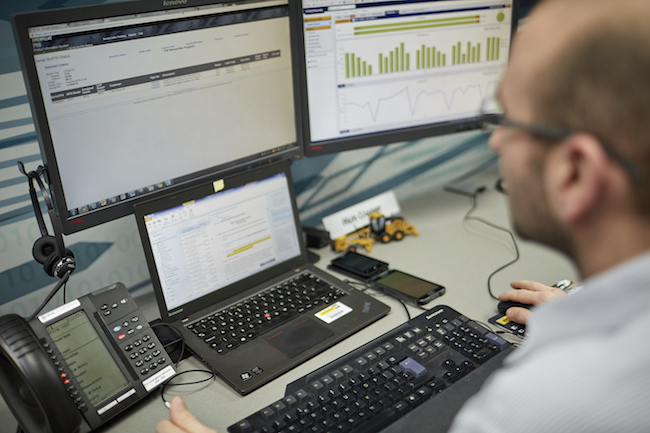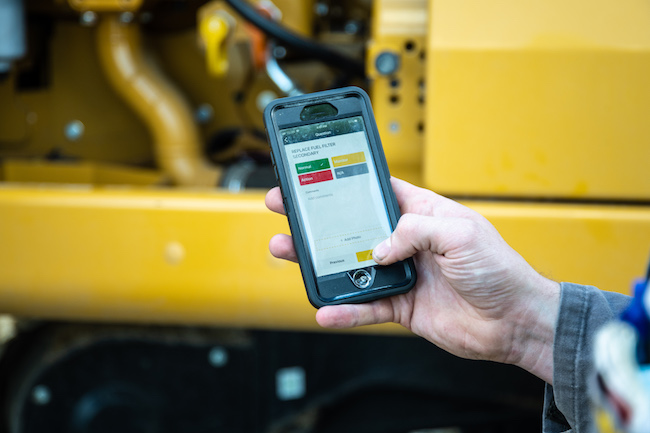
How new construction technologies are improving efficiencies and reducing emissions on the job site
By Peter Gibbons
Equipment Green Construction
Construction has been somewhat slow to adapt to cleaner operations, but machines are now being manufactured to drive greater efficiencies. PHOTO: Finning
Fuel economy and greenhouse gas emissions are becoming major factors in the construction industry and as a result, companies are starting to overhaul the way they operate. While LEED and other green building programs have been reshaping the design-build space for some time — the construction side has been slower to adapt.
The introduction of new regulations, next generation equipment and more stringent emissions targets is starting to change the way construction contractors operate. Equipment is playing a crucial role in creating greener job sites — machines are now being manufactured to drive greater efficiencies, from state-of-the-art engines and design to cutting-edge technology that’s connecting job sites and providing companies with new ways to measure machine health, increase productivity and run cleaner and more efficient operations.
Combining technology and advancements in equipment design provides numerous opportunities to improve production, increase fuel efficiency, reduce emissions and lessen the overall impact on the environment. Businesses embracing this new way of thinking are seeing the benefits — winning bids and decreasing their carbon footprint.
ADVANCEMENTS IN MACHINE CONTROL RESULTING IN GREATER EFFICIENCY, FEWER EMISSIONS
Moving dirt is still the foundation of just about every construction project. But technology can make the process more efficient, safer and greener.
The speed and accuracy at which a project is completed can have a huge impact on fuel emissions and environmental disruptions. A GPS grade control system on an excavator for example, allows an operator to dig without worrying about over- or under-excavating, completely eliminating re-work and providing improved safety and visibility for the operator. The system can improve efficiency 100 per cent over a machine without this technology. Or, take a piece of earthmoving equipment with machine control. It consumes up to 40 per cent less fuel and can reduce the equipment hours required on a job by 32 per cent.

Telematics is giving owners and office staff real-time data on equipment in the field. PHOTO: Finning
Telematics gives contractors the ability to send design files directly to machines significantly cutting down on commuting between the office and the job site, saving time and emissions. It also ensures machines are running efficiently and provides real-time intel into what is happening on the job site. An idling machine can pump out unnecessary emissions, not to mention burn up warranty time. Telematics can help owners and operators understand how much their machines are idling and once that data is analyzed, can lead to reduced maintenance and emissions and provide a better understanding of performance and possible efficiencies.
ADOPTING A CLEANER WAY OF DOING BUSINESS
Electric and hybrid machines are starting to fill a growing demand for those who want to further push environmental goals. They are increasingly popular in urban centres and emissions-restricted zones like densely-populated areas. However, limited access to these machines has been a barrier to wider adoption of this technology. And despite greater fuel savings, less scheduled maintenance and extended component life, added costs of 20 to 30 per cent on the initial investment can also be a deterrent.
The next generation of equipment is continually improving, and each new model provides advancements in engine technology and control systems, drastically reducing fuel consumption, extending maintenance intervals and lowering maintenance costs. Although the question of diesel, hybrid or electric is becoming more common, it is still dependant on the type of job. There are larger projects which require very specific machinery that is not yet available in electric. The electric and hybrid machines are still much more prevalent in the compact equipment market. Traditional diesel technology remains standard for heavy equipment for the time being, but is predicted to evolve with next-gen machines offering much cleaner engines.
NEXT-GEN MACHINES OFFER REDUCED EMISSIONS AND FUEL CONSUMPTION
From extended maintenance intervals to reduced maintenance costs, emission-compliant equipment is becoming increasingly popular with the new demand for emissions restrictions when bidding for work. Those who aren’t on board risk getting left behind, potentially losing work. With stricter environmental regulations and enforcement they could also face heavy fines. Not having this technology installed could also impact the equipment’s marketability to other countries in future years when a customer plans to sell off their machine.
Prior to 1999, there was no federal authority regulating emissions. Today, the Canadian Environmental Protection Act (CEPA) ensures off-road engines, such as those found in construction equipment, are meeting standards. As a result, there is a significant reduction in the amount of nitrogen oxide, hydro-carbons and particulate matter these machines release into the atmosphere. Next-gen Tier 4 machines meet the highest level of emissions restrictions and reduce fuel consumption by up to 20 per cent. And the technology is getting better all the time.

New software tools are giving operators and owners more insight into equipment than ever. PHOTO: Finning
Integrated diagnostic tools are increasing machine servicing efficiency and saving unnecessary trips to the job site. Technicians can now remotely run diagnostic testing to detect potential issues without impacting machine productivity. Oil filter life and maintenance intervals can also be tracked on the in-cab touchscreen monitors, ensuring machine uptime and fuel efficiency is maximized.
On-board weighing systems are helping to improve operator accuracy, eliminating dangerous overloading and wasteful under-loading while helping to reduce errors and rework — all of which can save time, fuel and component life. And new remote control technology means operators can maneuver machines from a safe distance when working in potentially hazardous environments — keeping operators safe and maintaining efficiency on the job site.
ADAPTING TO A CHANGING INDUSTRY
Recognizing new technology as not just an investment in business, but an investment in the environment will be key to future growth in the industry. As contractors continue to experience greater competition and are pushed to focus on reducing their carbon footprint, innovation remains the way forward. Businesses need to find new ways to adapt processes to meet stricter requirements while increasing efficiencies to remain competitive and win business.
The adoption of innovative, green technologies will undoubtedly also help attract a younger demographic to the construction industry. Data scientists, tech-savvy operators and site managers who value a cleaner and more efficient way of doing business are going to find those opportunities in construction.
Peter Gibbons is a Regional Technology Manager with Finning Canada





